Monday, 12 September 2016
We will happily be having sex with robots soon, according to scientists
The "sexbots" could be better than humans in bed and we could be looking at human-robot marriages by the year 2050, experts have claimed. Popularity of the machines has been rising as their realism continues to improve and soon could replace human companionship altogether.
Joel Snell, an expert in robots from Kirkwood College in Iowa, said the machines could be programmed to each individual person’s requirements.
“Because they would be programmable, sexbots would meet each individual user’s needs,” Mr Snell told the Daily Star.
“Robotic sex may become addictive. Sexbots would always be available and could never say no, so addictions would be easy to feed,” he said.
Labels:
Technology
What are the Best Computer Jobs for the Future?
If you’re considering going back to school for a career in information technology, of course you want to make sure that the time and financial investment you make will pay off with a lucrative career. Read on to learn more about the ten best computer jobs, evaluated by projected growth over the next decade as well as salary. The ranking methodology of the list first takes into account number of new jobs over the next ten years as reported by the Bureau of Labor Statistics; salary is a secondary factor, with level of education needed as a tertiary consideration. By preparing for one of these careers, you ensure that you and your family will enjoy job security that will persevere.
Discover the ten best computer jobs for the future:
Mobile Application Developer
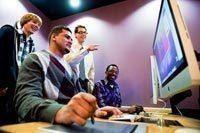 Mobile App Developer Employment Projections | 2010 - 2020
Mobile App Developer Employment Projections | 2010 - 2020- 10-Year Growth Pct: 32% (much faster than avg.)†
- 10-Year Growth Volume: 292,000 new jobs
- Average Salary: $95,000
- Mobile App Developer Career Path ››
Key Growth FactorsMobile application development is one of the world's fastest growing occupations. As smart phones and tablets continue to change the way we communicate, do business, and access news & entertainment, the demand for new and innovative mobile apps is growing at an incredible speed. This increased demand translates to one of the largest IT skills gaps ever realized – there are simply more mobile app development job openings than skilled application developers to fill them. Google's Android and Apple's iOS (iPhone & iPad) platforms will continue to offer the most job opportunities for mobile developersDatabase Administrator
 Database Administrator Employment Projections | 2010 - 2020
Database Administrator Employment Projections | 2010 - 2020- 10-Year Growth Pct: 31% (much faster than avg.)†
- 10-Year Growth Volume: 33,900 new jobs
- Average Salary: $82,000
- DBA Career Path ››
Key Growth FactorsBusinesses are accumulating record amounts of digital information, spurring the need for trained and certified DBAs to store, organize, analyze and secure this data. In addition, as more databases are connected to the Internet and cloud, data security will become increasingly vital & complex; database administrators and developers - especially those with information security skills - will be hired to protect corporate databases from hackers and other security threats.Software Engineer
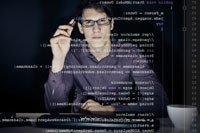 Software Engineer Employment Projections | 2010 - 2020
Software Engineer Employment Projections | 2010 - 2020- 10-Year Growth Pct: 30% (much faster than avg.)†
- 10-Year Growth Volume: 270,900 new jobs
- Average Salary: $90,000
- Software Engineer Career Path ››
Key Growth FactorsThe demand for software engineers will rise along with technological advancements and the proliferation of emerging network technologies. For example, increased corporate adoption of cloud and virtualization strategies will create a surge in demand for applications software engineers who can design and develop secure web-based programs. Likewise, as the sophistication and adoption of electronic data-processing systems continues to rise, the need to implement and upgrade to these new computer systems will fuel job creation for systems software engineers.Video Game Designer
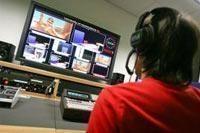 Video Game Designer Employment Projections | 2010 - 2020
Video Game Designer Employment Projections | 2010 - 2020- 10-Year Growth Pct: 30% (much faster than avg.)†
- 10-Year Growth Volume: 270,900 new jobs
- Average Salary: $80,000
- Video Game Designer Career Path ››
Key Growth FactorsThe $65+ billion dollar gaming industry has more than tripled in size over the last decade with no signs of slowing. Beyond the booming market for traditional console and PC games, the increased popularity, processing power and graphics capabilities of mobile devices has unlocked a new world of employment opportunities for game designers, artists and programmers. Video game designers with mobile software development expertise will be especially sought after as smart phones & tablets, such as the iPhone and iPad, continue to change how video games are accessed and played. Game designers will also benefit from growing public and private sector demand for intelligent simulation programs, e.g., military flight simulators.Network Administrator
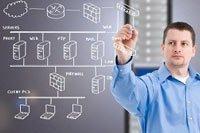 Network Administrator Employment Projections | 2010 - 2020
Network Administrator Employment Projections | 2010 - 2020- 10-Year Growth Pct: 28% (much faster than avg.)†
- 10-Year Growth Volume: 96,600 new jobs
- Average Salary: $69,000
- Network Administrator Career Path ››
Key Growth FactorsDemand for network administrators will continue to rise as organizations invest in new systems and network technologies to increase productivity and gain a competitive advantage. The rapid adoption of tablets and smartphones – and "Bring your own device" (BYOD) policies – into corporate culture means more organizations will use the Internet to conduct business online, translating to increased job opportunities for network administrators and network managers who can help businesses securely utilize these emerging technologies to communicate with employees and customers.IT Security Specialist
 IT Security Specialist Employment Projections | 2010 - 2020
IT Security Specialist Employment Projections | 2010 - 2020- 10-Year Growth Pct: 22% (faster than average)†
- 10-Year Growth Volume: 65,700 new jobs
- Average Salary: $87,000
- IT Security Specialist Career Path ››
Key Growth FactorsSecurity will remain a top concern for IT executives and hiring managers as the frequency, scope and complexity of cyber attacks continues to escalate. IT executives interviewed in Computerworld’s 2012 IT forecast survey report actively seeking professionals with information security skills, but finding it difficult to locate good talent. This indicates an incredible opportunity for technology professionals to advance their security skills and credentials. Computer security skills in the greatest demand in 2012 and beyond include IT operations security, mobile device security, risk management, information assurance, network and cloud/virtualization security.Computer Systems Analyst
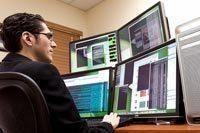 Computer Systems Analyst Employment Projections | 2010 - 2020
Computer Systems Analyst Employment Projections | 2010 - 2020- 10-Year Growth Pct: 22% (faster than average)†
- 10-Year Growth Volume: 120,400 new jobs
- Average Salary: $79,000
- Computer Systems Analyst Career Path ››
Key Growth FactorsAs organizations continue to increase their reliance on technology, computer systems analysts will be hired to architect new systems across all industries. Healthcare is a key field for systems analyst job growth, as aggressive government mandates and funding initiatives continue to drive rapid increases in electronic medical record (EMR) adoption, electronic-Rx services and other healthcare software projects that require the development of custom computer systems. The U.S. Department of Labor also predicts a 43% increase in systems analyst hiring at IT consulting firms, which translates to a huge amount of freelance and contract employment opportunities.Web Developer
 Web Developer Employment Projections | 2010 - 2020
Web Developer Employment Projections | 2010 - 2020- 10-Year Growth Pct: 22% (faster than average)†
- 10-Year Growth Volume: 65,700 new jobs
- Average Salary: $91,000
- Web Developer Career Path ››
Key Growth FactorsEach year, a record number of businesses bring their offerings to the Internet. As the number of products and services available online continues to grow, web developers and designers will enjoy increased job opportunities. Proliferation of social media, social networking and other Web 2.0 communities will boost demand for web developers as businesses look to engage a new generation of customers and spur a competitive advantage in these rapidly growing platforms.Health Information Technician
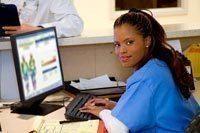 Health Information Technician Employment Proj. | 2010 - 2020
Health Information Technician Employment Proj. | 2010 - 2020- 10-Year Growth Pct: 21% (faster than average)†
- 10-Year Growth Volume: 37,700 new jobs
- Average Salary: $46,000
- Health Information Technician Career Path ››
Key Growth FactorsHealth care will produce more new computer jobs from 2012 through 2020 than any other single industry. Aggressive government mandates and funding incentives for hospitals and private health practices to adopt centralized electronic medical record (EMR) systems, is driving unprecedented hiring of health information technicians who are trained & certified in these new technologies. Health information technicians earn the lowest starting salary on this list, however the required education is the quickest (typically a 2-year degree program in Health IT), plus candidates learning now will be well-positioned for lucrative management positions as the health IT job market continues its rapid expansion.Technology Manager
 Technology Manager Employment Projections | 2010 - 2020
Technology Manager Employment Projections | 2010 - 2020- 10-Year Growth Pct: 18% (faster than average)†
- 10-Year Growth Volume: 55,800 new jobs
- Average Salary: $111,000
- Technology Manager Career Path ››
Key Growth FactorsJob growth for information technology managers is directly tied to the growth rates of the IT workers they supervise. Record-breaking growth in a wide range of technical career fields – including networking, mobile development, software engineering, databases and virtualization – will continue from 2013 through 2020 and beyond, in turn fueling demand for talented IT managers. Additional growth will be driven by increased focus on information security and the hiring of additional IT security personnel.
Labels:
Education
Sunday, 11 September 2016
Do you want to Use your Home/Office Computer from Any Where you are?
To connect to a remote computer, that computer must be turned on, it must have a network connection, Remote Desktop must be enabled, you must have network access to the remote computer (this could be through the Internet), and you must have permission to connect. For permission to connect, you must be on the list of users. Before you start a connection, it's a good idea to look up the name of the computer you're connecting to and to make sure Remote Desktop connections are allowed through its firewall.
If you're user account doesn't require a password to sign in, you'll need to add a password before you're allowed to start a connection with a remote computer.
To allow remote connections on the computer you want to connect to
- Open System by clicking the Start button , right-clicking Computer, and then clicking Properties.
- Click Remote settings. If you're prompted for an administrator password or confirmation, type the password or provide confirmation. Under Remote Desktop, select one of the three options.
- Click Select Users.
If you're an administrator on the computer, your current user account will automatically be added to the list of remote users and you can skip the next two steps. - In the Remote Desktop Users dialog box, click Add.
- In the Select Users or Groups dialog box, do the following:
- To specify the search location, click Locations, and then select the location you want to search.
- In Enter the object names to select, type the name of the user that you want to add, and then click OK.
- The name will be displayed in the list of users in the Remote Desktop Users dialog box. Click OK, and then click OK again.
Note
You can’t connect to a computer that's asleep or hibernating, so make sure the settings for sleep and hibernation on the remote computer are set to Never. (Hibernation is not available on all computers.)
To look up the computer name of the remote computer
- On the remote computer, open System by clicking the Start button , right-clicking Computer, and then clicking Properties.
- Under Computer name, domain, and workgroup settings, you can find your computer name, and its full computer name if your computer is on a domain.
To allow Remote Desktop connections through a Windows Firewall
If you're having trouble connecting, Remote Desktop connections might be getting blocked by the firewall. Here's how to change that setting on a Windows PC. If you're using another firewall, make sure the port for Remote Desktop (usually 3389) is open.
- On the remote computer, click Start and select Control Panel.
- Click System and Security.
- Click Allow a program through Windows Firewall under Windows Firewall.
- Click Change settings and then check the box next to Remote Desktop.
- Click OK to save the changes.
To set a password for your user account
Your user account must have a password before you can use Remote Desktop to connect to another computer.
- Click Start and select Control Panel.
- Double-click User Accounts.
- Select Change your Windows Password under User Accounts.
- Click Create a password for your account and follow the instructions on the screen.
To start Remote Desktop on the computer you want to work from
- Open Remote Desktop Connection by clicking the Start button . In the search box, type Remote Desktop Connection, and then, in the list of results, click Remote Desktop Connection.
- In the Computer box, type the name of the computer that you want to connect to, and then click Connect. (You can also type the IP address instead of the computer name.)
Labels:
Tutorial
Thursday, 8 September 2016
Download Windows Password Reset CD Free
Human being are not perfect a by means, One can forget many things in her/his daily life. But the Most is When you have forgotten you Computer Password, What happen when you forgot a Window password? Well Don't worry Download the Windows Password Reset CD Free to Fix your Problem
Labels:
Software
Tuesday, 30 August 2016
Download Free Online Games and Install into your Device
Download and Install with Low Size Capacity (KB) and Play over 3000 free online games! Including Action games,arcade games, puzzle games, funny games, sports games, shooting games, and more!
Click below to start Select you game Category and Download
Click below to start Select you game Category and Download
Labels:
Funny
Do you Charge your SmartPhone Over Night? Here's why you shouldn't charge your smartphone overnight
Chances are, you plug in your phone before you go to bed at night, thinking it's best to greet the morning with a fully charged device. Is this a good idea? That depends. Here's the thing.
Many people don't expect to keep their phones for much longer than two years. For the most part, experts say, those people are not going to notice much damage to their phone batteries before they start hankering for a new device.
If that sounds like you, feel free to charge every night, and as often as you like in between.
But frequent charging takes a toll on the lithium-ion batteries in our phones. And it's not because they can be overcharged, said Edo Campos, a spokesman for Anker, which produces phone chargers. "Smartphones are, in fact, smart," Campos said. "They know when to stop charging."
Android phones and iPhones are equipped with chips that protect them from absorbing excess electrical current once they are fully charged. So in theory, any damage from charging your phone overnight with an official charger, or a trustworthy off-brand charger, should be negligible. But the act of charging is itself bad for your phone's battery.
Labels:
Technology
How to FIX "WhatsApp is Denied to Read Contacts"
A friend of me personally known telling me that his WhatsApp cant read his contacts, at first i thought that his contacts was hidden from his phonebook but i find out that its OK, i also check “Show hidden contacts” in WhatsApp but that didn’t work out and i just re-install it still nothing change, then i finally apply the below tips and it work perfectly.
This means WhatsApp is not enabled on your Phone`s contacts privacy. You simply need to enable it to remove that error.
This means WhatsApp is not enabled on your Phone`s contacts privacy. You simply need to enable it to remove that error.
1. Open your settings.
2. Tap Privacy.
3. Select Contacts.
4. Turn on Whatsapp.
Labels:
Tutorial
Monday, 29 August 2016
Do you Want to Make your Video Clip as a Profile Picture on Facebook? Very Easy,..
Watch this Videos For Easy Way.....
Here’s how to set up yours:
Here’s how to set up yours:
- Open up your Facebook app on iOS.
- Go to your profile page and tap your profile picture.
- Select “Take a New Profile Video” or “Upload Video or Photo.” If you don’t see those options, the update hasn’t rolled out to you yet and will say “Coming Soon.”
- Select or record your video (the length is limited to seven seconds).
Labels:
Tutorial
Sunday, 28 August 2016
CMD Tutorials........A-Z Index of the Windows CMD command line
List of DOS commands;
Command Prompt is a command line interpreter application available in most Windows operating systems.Command Prompt is used to execute entered commands. Most of those commands are used to automate tasks via scripts and batch files, perform advanced administrative functions, and troubleshoot and solve certain kinds of Windows issues.
Command Prompt is officially called Windows Command Processor but is also sometimes called the command shell or by its filename cmd.exe.
Note: Command Prompt is sometimes incorrectly referred to as "the DOS prompt" or as MS-DOS itself. Command Prompt is a Windows program that emulates many of the command line abilities available in MS-DOS but it is not actually MS-DOS.
How To Access Command Prompt
Command Prompt can be accessed via the Command Prompt shortcut located in the Start Menu or on the Apps screen, depending on what version of Windows you have.ADDUSERS Add or list users to/from a CSV file
ADmodcmd Active Directory Bulk Modify
ARP Address Resolution Protocol
ASSOC Change file extension associations•
ASSOCIAT One step file association
AT Schedule a command to run at a specific time
ATTRIB Change file attributes
b
BCDBOOT Create or repair a system partition
BCDEDIT Manage Boot Configuration Data
BITSADMIN Background Intelligent Transfer Service
BOOTCFG Edit Windows boot settings
BROWSTAT Get domain, browser and PDC info
c
CACLS Change file permissions
CALL Call one batch program from another•
CERTREQ Request certificate from a certification authority
CERTUTIL Utility for certification authority (CA) files and services
CD Change Directory - move to a specific Folder•
CHANGE Change Terminal Server Session properties
CHKDSK Check Disk - check and repair disk problems
CHKNTFS Check the NTFS file system
CHOICE Accept keyboard input to a batch file
CIPHER Encrypt or Decrypt files/folders
CleanMgr Automated cleanup of Temp files, recycle bin
CLIP Copy STDIN to the Windows clipboard
CLS Clear the screen•
CMD Start a new CMD shell
CMDKEY Manage stored usernames/passwords
COLOR Change colors of the CMD window•
COMP Compare the contents of two files or sets of files
COMPACT Compress files or folders on an NTFS partition
COMPRESS Compress one or more files
CONVERT Convert a FAT drive to NTFS
COPY Copy one or more files to another location•
Coreinfo Show the mapping between logical & physical processors
CSCcmd Client-side caching (Offline Files)
CSVDE Import or Export Active Directory data
d
DATE Display or set the date•
DEFRAG Defragment hard drive
DEL Delete one or more files•
DELPROF Delete user profiles
DELTREE Delete a folder and all subfolders
DevCon Device Manager Command Line Utility
DIR Display a list of files and folders•
DIRQUOTA File Server Resource Manager Disk quotas
DIRUSE Display disk usage
DISKPART Disk Administration
DISKSHADOW Volume Shadow Copy Service
DISKUSE Show the space used in folders
DOSKEY Edit command line, recall commands, and create macros
DriverQuery Display installed device drivers
DSACLs Active Directory ACLs
DSAdd Add items to active directory (user group computer)
DSGet View items in active directory (user group computer)
DSQuery Search for items in active directory (user group computer)
DSMod Modify items in active directory (user group computer)
DSMove Move an Active directory Object
DSRM Remove items from Active Directory
Dsmgmt Directory Service Management
e
ECHO Display message on screen•
ENDLOCAL End localisation of environment changes in a batch file•
ERASE Delete one or more files•
EVENTCREATE Add a message to the Windows event log
EXIT Quit the current script/routine and set an errorlevel•
EXPAND Uncompress CAB files
EXPLORER Open Windows Explorer
EXTRACT Uncompress CAB files
f
FC Compare two files
FIND Search for a text string in a file
FINDSTR Search for strings in files
FOR /F Loop command: against a set of files•
FOR /F Loop command: against the results of another command•
FOR Loop command: all options Files, Directory, List•
FORFILES Batch process multiple files
FORMAT Format a disk
FREEDISK Check free disk space
FSUTIL File and Volume utilities
FTP File Transfer Protocol
FTYPE File extension file type associations•
g
GETMAC Display the Media Access Control (MAC) address
GOTO Direct a batch program to jump to a labelled line•
GPRESULT Display Resultant Set of Policy information
GPUPDATE Update Group Policy settings
h
HELP Online Help
HOSTNAME Display the host name of the computer
i
iCACLS Change file and folder permissions
IEXPRESS Create a self extracting ZIP file archive
IF Conditionally perform a command•
IFMEMBER Is the current user a member of a group
IPCONFIG Configure IP
INUSE Replace files that are in use by the OS
l
LABEL Edit a disk label
LODCTR Load PerfMon performance counters
LOGMAN Manage Performance Monitor logs
LOGOFF Log a user off
LOGTIME Log the date and time in a file
m
MAKECAB Create .CAB files
MAPISEND Send email from the command line
MBSAcli Baseline Security Analyzer
MEM Display memory usage
MD Create new folders•
MKLINK Create a symbolic link (linkd) •
MODE Configure a system device COM/LPT/CON
MORE Display output, one screen at a time
MOUNTVOL Manage a volume mount point
MOVE Move files from one folder to another•
MOVEUSER Move a user from one domain to another
MSG Send a message
MSIEXEC Microsoft Windows Installer
MSINFO32 System Information
MSTSC Terminal Server Connection (Remote Desktop Protocol)
n
NET Manage network resources
NETDOM Domain Manager
NETSH Configure Network Interfaces, Windows Firewall & Remote access
NBTSTAT Display networking statistics (NetBIOS over TCP/IP)
NETSTAT Display networking statistics (TCP/IP)
NLSINFO Display locale information (reskit).
NLTEST Network Location Test (AD)
NOW Display the current Date and Time
NSLOOKUP Name server lookup
NTBACKUP Backup folders to tape
NTDSUtil Active Directory Domain Services management
NTRIGHTS Edit user account rights
NVSPBIND Modify network bindings
o
OPENFILES Query or display open files
p
PATH Display or set a search path for executable files•
PATHPING Trace route plus network latency and packet loss
PAUSE Suspend processing of a batch file and display a message•
PERMS Show permissions for a user
PERFMON Performance Monitor
PING Test a network connection
POPD Return to a previous directory saved by PUSHD•
PORTQRY Display the status of ports and services
POWERCFG Configure power settings
PRINT Print a text file
PRINTBRM Print queue Backup/Recovery
PRNCNFG Configure or rename a printer
PRNMNGR Add, delete, list printers and printer connections
ProcDump Monitor an application for CPU spikes
PROMPT Change the command prompt•
PsExec Execute process remotely
PsFile Show files opened remotely
PsGetSid Display the SID of a computer or a user
PsInfo List information about a system
PsKill Kill processes by name or process ID
PsList List detailed information about processes
PsLoggedOn Who's logged on (locally or via resource sharing)
PsLogList Event log records
PsPasswd Change account password
PsPing Measure network performance
PsService View and control services
PsShutdown Shutdown or reboot a computer
PsSuspend Suspend processes
PUSHD Save and then change the current directory•
q
QGREP Search file(s) for lines that match a given pattern
Query Process / QPROCESS Display processes
Query Session / QWinsta Display all sessions (TS/Remote Desktop)
Query TermServer /QAppSrv List all servers (TS/Remote Desktop)
Query User / QUSER Display user sessions (TS/Remote Desktop)
r
RASDIAL Manage RAS connections
RASPHONE Manage RAS connections
RECOVER Recover a damaged file from a defective disk
REG Registry: Read, Set, Export, Delete keys and values
REGEDIT Import or export registry settings
REGSVR32 Register or unregister a DLL
REGINI Change Registry Permissions
REM Record comments (remarks) in a batch file•
REN Rename a file or files•
REPLACE Replace or update one file with another
Reset Session Delete a Remote Desktop Session
RD Delete folder(s)•
RMTSHARE Share a folder or a printer
ROBOCOPY Robust File and Folder Copy
ROUTE Manipulate network routing tables
RUN Start | RUN commands
RUNAS Execute a program under a different user account
RUNDLL32 Run a DLL command (add/remove print connections)
s
SC Service Control
SCHTASKS Schedule a command to run at a specific time
SET Display, set, or remove session environment variables•
SETLOCAL Control the visibility of environment variables•
SetSPN Edit Service Principal Names
SETX Set environment variables
SFC System File Checker
SHARE List or edit a file share or print share
ShellRunAs Run a command under a different user account
SHIFT Shift the position of batch file parameters•
SHORTCUT Create a windows shortcut (.LNK file)
SHUTDOWN Shutdown the computer
SLEEP Wait for x seconds
SLMGR Software Licensing Management (Vista/2008)
SORT Sort input
START Start a program, command or batch file•
STRINGS Search for ANSI and UNICODE strings in binary files
SUBINACL Edit file and folder Permissions, Ownership and Domain
SUBST Associate a path with a drive letter
SYSMON Monitor and log system activity to the Windows event log
SYSTEMINFO List system configuration
t
TAKEOWN Take ownership of a file
TASKLIST List running applications and services
TASKKILL End a running process
TELNET Communicate with another host using the TELNET protocol
TIME Display or set the system time•
TIMEOUT Delay processing of a batch file
TITLE Set the window title for a CMD.EXE session•
TLIST Task list with full path
TOUCH Change file timestamps
TRACERT Trace route to a remote host
TREE Graphical display of folder structure
TSDISCON Disconnect a Remote Desktop Session
TSKILL End a running process
TSSHUTDN Remotely shut down or reboot a terminal server
TYPE Display the contents of a text file•
TypePerf Write performance data to a log file
TZUTIL Time Zone Utility
v
VER Display version information•
VERIFY Verify that files have been saved•
VOL Display a disk label•
w
W32TM Time Service
WAITFOR Wait for or send a signal
WEVTUTIL Clear event logs, enable/disable/query logs
WHERE Locate and display files in a directory tree
WHOAMI Output the current UserName and domain
WINDIFF Compare the contents of two files or sets of files
WINRM Windows Remote Management
WINRS Windows Remote Shell
WMIC WMI Commands
WUAUCLT Windows Update
x
XCACLS Change file and folder permissions
XCOPY Copy files and folders
:: Comment / Remark•
Labels:
Tutorial
How to FIX Laptop Cursor won't move/Stuck
Press and hold the "Fn" key on the laptop keyboard; on most laptops, it is located between the "Ctrl" and "Alt" keys. Press the "F9" key once, then release the "Fn" key. This keyboard shortcut is used to disable or enable the touchpad software. Test the mouse touchpad to see if the cursor responds.
Labels:
Tutorial
Saturday, 27 August 2016
How to Configure Router/ Set Up Router
A router is hardware device designed to receive, analyze and move incoming packets to another network. It may also be used to convert the packets to another network interface, drop them, and perform other actions relating to a network. The picture shows the Linksys BEFSR11 wireless router and is what many home routers resemble.
A router has a lot more capabilities than other network devices, such as a hub or a switch that are only able to perform basic network functions. For example, a hub is often used to transfer data between computers or network devices, but does not analyze or do anything with the data it is transferring. By contrast, routers can analyze the data being sent over a network, change how it is packaged, and send it to another network or over a different network. For example, routers are commonly used in home networks to share a single Internet connection between multiple computers.
What's the Different between Router and Modem?
Labels:
Tutorial
Friday, 26 August 2016
EVOLUTION OF COMPUTERS
The First Computer
Around 3000 B.C. The Mesopotamians unknowingly laid the foundation of computer era. They invented the earliest form of Bead-&-Wire counting machine known as Abacus. The Chinese improved above the Abacus so that they can calculate fast.
Napier ‘Logs’ & ‘Bones’
John Napier (1550-1617) developed the idea of logarithms. He used logs to transform multiplication problem to addition problem. Napier’s logs later became the basis for a well-known invention, The Computation Machine Known as Slide-Rule (Invented in 1662) Napier also devices set of numbering rods known as ‘Napier’s Bones’. He could perform both multiplication and division using these ‘Bones’.
Pascal’s adding Machine
Blaise Pascal, a French Mathematician, invented a Machine in 1662 made up of gears which was used for adding numbers quickly. This machine was known as Adding Machine (also known as Pascaline) and was capable of addition and subtraction. In worked on clockwork mechanism principle. The Adding Machine consisted of numerous toothed wheels having unique position value. The rotation wheels controlled the Addition and Subtraction operation. This Machine was capable carry-transfer automatically.
Leibnitz Calculator
Gottfried Leibnitz a German Mathematician, improved the adding Machine and constructed a new machine in 1671 that was able to perform multiplication and division as well. This Machine performed multiplication through repeated addition of numbers. Leibnitz’s machine used stepped cylinder each with nine teeth of varying lengths instead of wheels as was used by Pascal.
Jacquard’s Loom
Joseph Jacquard manufactured punched cards at the end of American Revolution and used them to control looms in 1801. Thus the entire control weaving process was automatic. The entire operation was under a program’s control. With the historic invention of punched cards, the era of Storing and Retrieving information started that greatly influenced the later invention and advancements. (see Hollerith’s Machine below)Babbage’s Difference Engine
Charles Babbage, a professor of mathematics, developed a machine called Difference engine in the year 1882. This machine was expected to calculate logarithmic tables to high degree of precision. The difference engine was made to calculate various mathematical functions. The machine was capable of polynomial evolution by finite difference and its operation was automatic multi stop operation.
Babbage’s Analytical Engine
In 1833, Charles Babbage started designing an analytical engine which was to become a real ancestor of modern day computer. With the methodical design of his analytical engine, Babbage meticulously established the basic principles on which today’s computer work. The Analytical Engine was capable to perform all four arithmetic operation as well as comparison, it had a number of features starting to those which are in today’s computer. He included the concept of central processor, Memory, Storage Area and Input/output Devices in his design. The Two revolutionary innovation incorporated in analytical Engine where comparisons and modifications of stored information. The first innovation enabled the machine to compare quantities and then decide which of the Instruction sequence to be followed. The second permitted the result of calculation to change numbers and instructions already stored in machine. Owing to the lack of technology of the time, the Analytical engine was never built. Its Design remained conceptual. His great inventions of Difference Engine and Analytical Engine earned Charles Babbage the title “FATHER OF MODERN COMPUTERS”-a fitting Tribute to him.
Hollerith’s Machine
In 1887, an American named Herman Hollerith (1869-1926) fabricated what was dreamt of by Charles Babbage. He fabricated the first electro-mechanical Punched-card tabulator that used punched-cards for input, output and instructions. This machine was used by American department of census to compile their 1880 census data and were able to complete compilation in 3 years which earlier used to take around 10 years.
MARK-I
Professor Howard Aiken (1900-1973) in U.S constructed in 1943 an electromechanical computer named “MARK-I” which could multiply two 10 digit numbers in 5 second-a record at that time. MARK-I was the first machine which could perform according to pre-programed instructions automatically without any manual interface. This was the first operational general purpose computer.
MODERN COMPUTERS
The term “Computer generation” is often used in relation to the hardware of computers. Each phase of computer development is known as a separate generation of computer. Each phase of development is characterized by type of switching circuits it utilizes.Most computers today use the idea of “Stored Program Computer” that was proposed by Professor John Von Neumann in 1945. The von Neumann architecture is based on three key concepts:-
1) Data and instructions (program) are stored in single read-write memory.
2) The memory contents are addressable by locations.
3) Execution takes place in sequential fashion i.e.: from one instruction to the next unless modified explicitly.
THE FIRST GENERATION COMPUTERS
The first generation computers used the thermionic valves (vacuum tubes) and machine language was used for giving instructions. The first generation computers used the concept of “Stored program” The computers of this generations were very large in size and their programming was a difficult task. Here are some examples:-ENIAC
This was the first electronic computer developed in 1946 by a team lead by Professor Eckert and Mauchly at the University of Pennsylvania in U.S.A. This computer was called Electronic Numerical Integrator And Calculator (ENIAC), which used high speed vacuum tube switching devices. It had a very small memory and it was used for calculating the trajectories of missiles. It took 200 microseconds for addition and about 2800 microseconds for multiplications for multiplication. The giant machine was 30×50 feet long and weighed about 30 tons, contained 18,000 vacuum tubes, 70,000 resistors, 10,000 capacitors, 6000 switches, used 150,000 watts of electricity and costs $400,000. When ENIAC was built, it was 5000 times faster than the closest competitor The Howard MARK-I.
EDVAC
The Binary Arithmetic was used in the construction of computer called the Electronic Discrete Variable Automatic Computer (EDVAC), completed in 1950. The Von Neumann concept of “stored program” was also applied in EDVAC. With this, the operation become faster since the computer can rapidly access both the program and data.
EDSAC
The EDSAC, short for Electronic Delay Storage Automatic Computer was built by Professor M.V.Wilkes at Cambridge University in 1949 and used mercury delayed lines for storage. It also used the Von Neumann concept of “Stored Program”. This allowed easy implementation of program loops.
UNIVAC-I
Commercial production of stored program electronic computer began in early 50’s. One such computer was UNIVAC-I built by UNIVAC division of Remington Rand and delivered in 1951. This computer also used vacuum tubes. UNIVAC stands for (Universal Automatic Computers).
Though the first generation computers were welcomed by the government and Universities as they greatly helped them in these tasks, however, the first generation computers suffered from great limitations like slow speed, restricted computing capacity, high power consumption, short mean time between failures, large size and limited programming capabilities.
Further Researches are done to remove these limitations and the Second Generation computers developed.
THE SECOND GENERATION COMPUTERS
The revolution in electronics too place with the invention of “Transistors” by Bardeen, Brattain and Shockley in 1946. Transistors were highly reliable as compared to Tubes. They occupied very less space and required only 1/10th of the power required by the tubes and they were 10 times cheaper than Tubes.Another Major event was the invention of Magnetic cores for storage. These were tiny ferrite rings (0.02 inch diameter) that could be magnetized either clockwise or anticlockwise direction. The two direction represented 0 and 1. Magnetic cores were used to create large Random Access Memories (RAM).
The second generation computers began with the advent of transistorized circuitry, invention of magnetic cores and development of magnetic disk storage devices. These new development made the computers much more reliable.
The increased reliability and availability of large memories paved the way for the development of HLLs (High Level Languages) such as FORTRAN, COBOL, ALGOL, SNOBOL etc. With speedy CPUs and advent of magnetic tape and disk storage, Operating systems came into being. Batch operating system rules the Second Generation Computers.
Commercial applications rapidly developed during this period and more than 80% of these computers were used in Business and industries in the application like Payroll, Inventory control, Marketing, Production, planning etc.
Here are some Second Generation Computers:-
IBM 1401

IBM 7094

It is a Small-Medium sized computer
Read more at http://en.wikipedia.org/wiki/IBM_7090
RCA 501

UNIVAC 1108

It is a large sized computer which occupies a large room, it was the fastest at that time, it uses a CRT screen for display and Magnetic tape to store programs.
Read more at http://en.wikipedia.org/wiki/UNIVAC_1100/2200_series
THE THIRD GENERATION COMPUTERS
The third generation computers replaces transistors with integrated circuits popularly known as “Chips”. The Integrated Circuit or IC was invented by Jack Kilby at Texas instruments 1958.An IC is a wafer of thin slice of extremely purified silicon crystals. A single IC has many transistors, resistors and capacitors along with the associated circuitry encapsulated in a small capsule with many leads.
Frim Small Scale Integrated Circuits (SSI) which had about 10 transistors per chip, technology to Medium Scale Integrated circuits (MSI) with about 100 transistors per chip. The size of main memory reached about 4 Mega Bytes. Magnetic disk technology also developed and become feasible to have drive having capacity up to 100 MBs. The CPUs become much more powerful with the capacity of carrying out 1 million instructions per second (MIPS).
The third generation computers using integrated circuits proved to be highly reliable, relatively inexpensive and faster. Less human labour was required at assembly stage. Examples of some main- frame computers developed during this generation are:-
IBM 360 series, IBM 370/168, ICL 1900 series, ICL 2900, Honeywell Model 316, Honeywell 6000 series.
IBM 360

A Honeywell 6000 Series Computer

Computers these days found place in other areas also like education, survey, small business, estimation, analysis etc along with their previous are interest Engineering and Scientific.
THE FORTH GENERATION COMPUTERS
The advent of microprocessor chip marked the beginning of fourth generation computers. Medium scale integrated circuits (MSI) yielded to Large and vary large scale integrated circuits (VLSI) packing about 50000 transistors in a chip. Semiconductor memories replaced magnetic core memories. The emergence of the Microprocessor (CPU on a single chip) led to the emergence of an Extremely powerful Personal Computer. Computer costs came down so rapidly that these found places at most offices and then homes. The faster accessing and processing speeds and increased memory capacity helped in development of much more powerful Operating Systems.The second decade (around 1985) of fourth generation observed a great increase in the speed of microprocessor and size of main memory. The speed of microprocessor and speed of main memory and Hard Disk went up by a factor 4 every 3 years. Most of the Main-Frame CPU features became part of Microprocessor architecture in 90s.
In 1995, the most popular CPU was Pentium, Power PC etc. Also RISC (Reduced Instruction Set Computer) microprocessor are preferred in powerful servers for numeric computing and file services.
The Hard disks are also available of the sizes up to 80 Giga Bytes. For large Disks Redundant Array of Independent Disks (RAID) Technology gives storage up to hundreds of GBs. The CD-ROM (Compact Disks- read Only Memory) becoming popular day by day.
The computer network came of age and are one of the most popular ways of interacting with computer chains of million users. The computers are being applied in various areas like simulation, visualization, parallel computing, virtual reality, multimedia etc.
In this generation Micro Computers of Apple and IBM developed, Portable computers came into existence.
World’s First Portable Computer by IBM (The IBM 5100)(September 1975)

TOSHIBA T 1100

THE FIFTH GENERATION COMPUTERS
The fifth generation computing devices are based on artificial intelligence and are still in development, though there are features like voice recognition, face recognition, finger print recognition, gesture recognition etc. are being used today. Applications like 6th sense technology are still in development. The use of parallel processing and superconductor is helping to make artificial intelligence a reality. Quantum computation and nanotechnology will radically changing the face of computers in years. The goal of fifth generation computing is to develop devices hat respond to natural language input and are capable of learning and self-organization. The key developments of fifth generation computers are summed up as :- ULSI (Ultra Large Scale Integrations), scalable parallel computers, workstation clusters, Intranet, Internet, WWW, Micro-kernels, Portable software and hardware platforms etc.The most noticeable characteristic of 5th gen computers is the ability to apply previously gained knowledge, draw conclusions and then execute a task, The computer in short simulate the human ability in reason.
Computers will have to be able to classify information, search large database rapidly. Input devices become highly advanced.


DELL XPS Convertible PC

MacBook Air

Video Game Consoles

Some Historical Quotes on Computers:-
“I think there is a world market for maybe 5 computers”
-Thomas Watson, IBM, 1943
“It would appear that we have reached the limits of what it is possible to achieve with computer technology, although one should be careful with such statements as they tend to sound pretty silly in 5 years”
-John Von Neumann, 1949.
“Computers in future may not weight more than 1.5 ton”
-Popular mechanics, 1949
“There is no reason anyone would want a computer in their home”-Ken Olsen, DEC, 1977
Labels:
Technology
Subscribe to:
Posts (Atom)












